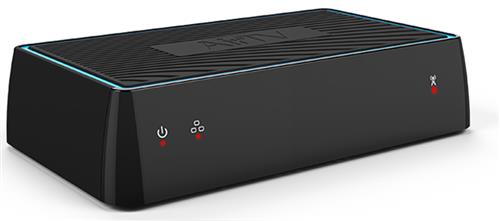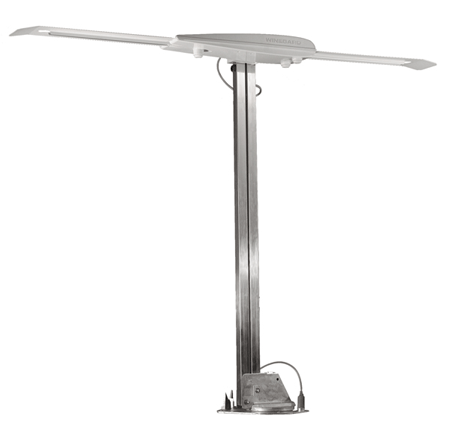This is Winegard’s Sensar III RV-mounted antenna. And this is the perfect time to install it. If you’re like most folks, your RV’ing is done for the year. Oh, you may have one more holiday trip in mind but most of the time you’re not going to be traveling the open roads if those roads are full of snow. So, while the RV’s parked at home, maybe a few upgrades are in order. Should this be one of them?
The case for a permanently mounted antenna
The Sensar III mounts to your RV’s roof. It has a manual mechanism to raise, lower, and aim it. When you’re driving, it can be in the down position. You won’t get TV reception when you’re traveling more than 15 miles per hour anyway. Keeping the antenna down means better fuel efficiency. Since you know that RV isn’t going to sip gas slowly anyway, any way to make it more efficient is going to be much appreciated.
When you park, it’s very easy and quick to raise and aim the antenna and it can be done from inside. The antenna can also be connected from inside the RV, meaning no cables to run outside.
A roof-mounted antenna becomes part of the RV and that increases its resale value, something you might be thinking of a few years down the road.
Here’s why you might not want a permanently mounted antenna
A permanently mounted antenna means you’re drilling a hole in the RV. If that makes you queasy, you might think twice about choosing a permanently mounted antenna. With a permanently mounted antenna you do get that connection indoors where you need it, that’s true. However, if you’re running a cable outside you can use a Flat RG6 cable. This short cable feeds through the cracks in doors and windows. That means you can completely shut the door or window and still get a cable connection outside.
Another thing to think about is cost. An antenna like Winegard’s Flatwave Air is roughly as powerful, and costs less. There’s no installation, just find a place to tie it to a pole or tripod.
Also, if you’re putting up an antenna every night you have a lot more flexibility as to where it goes. That roof-mounted antenna may not be able to see the broadcast towers at all because of the guy parked next to you with a roof mounted antenna.
Or… there’s another option.

This is the AirTV. It’s a small black box that sits silently at your home. You connect your home antenna to it, and you connect it to your home Wi-Fi. From there it sits and does its job so well you might forget it’s there.
The AirTV does one trick, but it does it well. It streams the antenna signal from your home to your devices. Those devices can be streaming boxes, smart TVs, phones or tablets. All you have to do is launch a free app and you’re watching TV from your home. You can even add a flash drive or hard drive for DVR function.
Why is this better? Because you can stream your home channels. If you’re in the middle of an RV trip, do you always want to know what’s going on in the city you’re visiting? Or would you rather know what’s going on at home?
Plus, with the AirTV system your passengers can be watching TV while you’re driving. That’s not possible with regular TV antenna signals, since they stop working at about 15mph.
Of course with the AirTV you do need a phone with a data plan, or a Wi-Fi connection. If you don’t have an unlimited plan from AT&T, you can get one by calling Solid Signal at 888-233-7563.
So, roof mounted antenna, antenna that’s not roof mounted, or no antenna at all? Lucky you – you have all the choices! Of course when it comes to getting all the hardware and support you need, there’s only one choice: solidsignal.com.





